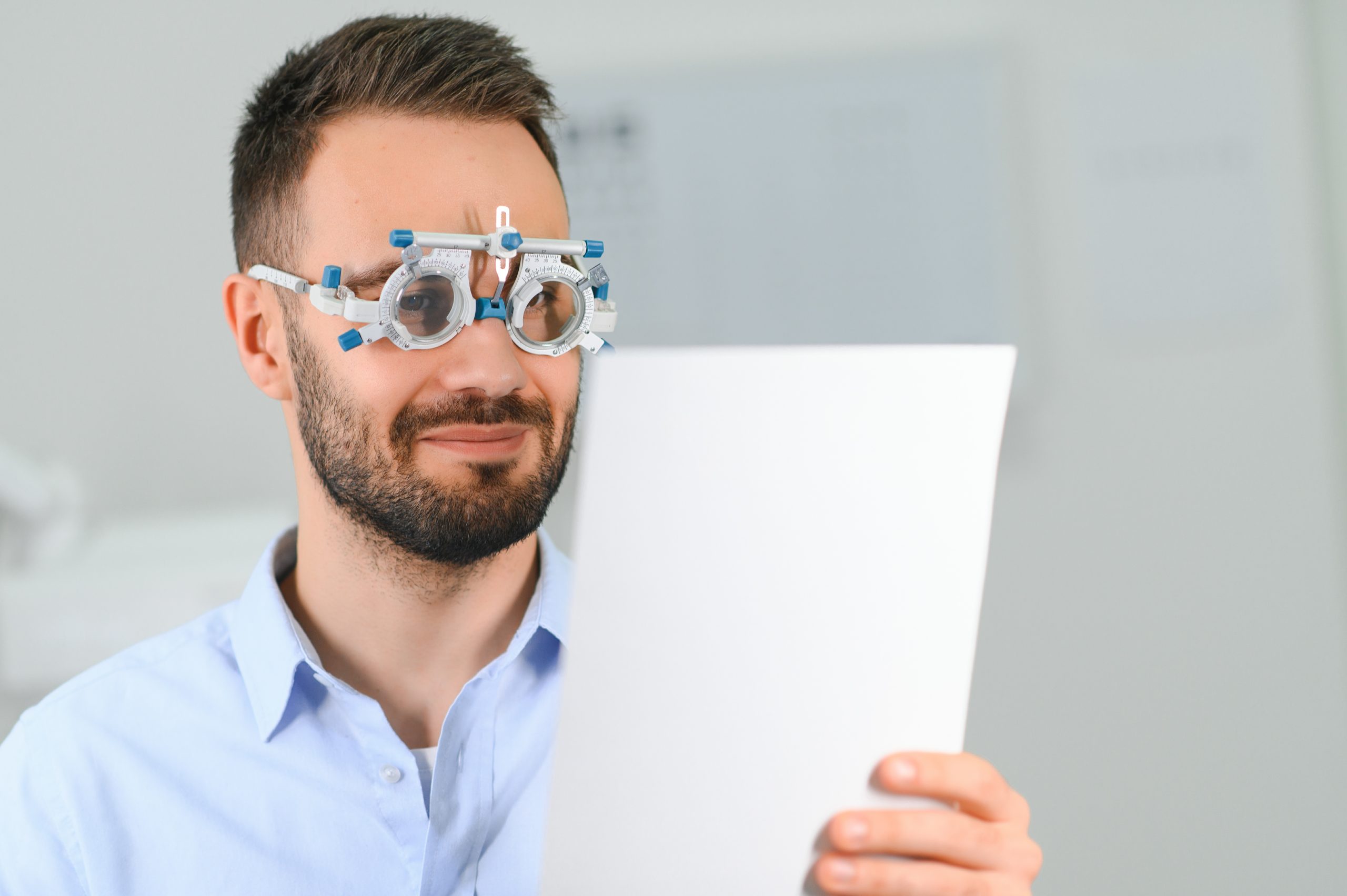Navigating Low Vision: Understanding, Coping, and Thriving
Introduction
Low vision is a condition that profoundly impacts an individual’s ability to perform everyday tasks that require visual acuity. It’s characterized by significant visual impairment that cannot be fully corrected with standard eyeglasses, contact lenses, medication, or surgical interventions. While low vision presents unique challenges, there are numerous strategies, technologies, and support systems available to help individuals maximize their remaining vision and maintain independence. In this comprehensive guide, we’ll delve deeper into the causes, symptoms, coping strategies, and resources available for those living with low vision.
Understanding the Causes of Low Vision
- Age-related Macular Degeneration (AMD): AMD is the leading cause of severe vision loss among older adults. It affects the macula, the central part of the retina responsible for sharp, central vision.
- Glaucoma: Glaucoma is a group of eye conditions characterized by damage to the optic nerve, often resulting in peripheral vision loss that can progress to tunnel vision.
- Diabetic Retinopathy: People with diabetes may develop diabetic retinopathy, a condition where high blood sugar levels damage the blood vessels in the retina, leading to vision loss.
- Cataracts: Cataracts cause clouding of the eye’s lens, resulting in blurred or dimmed vision.
- Inherited Eye Diseases: Conditions such as retinitis pigmentosa and Stargardt disease are inherited disorders that can cause progressive vision loss over time.
Identifying Symptoms of Low Vision
- Blurred Vision: Objects may appear fuzzy or indistinct, making it challenging to discern details.
- Peripheral Vision Loss: Difficulty seeing objects located to the side, leading to a narrowed field of vision.
- Difficulty Reading: Struggling to read small print or maintain focus while reading due to decreased visual acuity.
- Light Sensitivity: Sensitivity to bright lights or glare, which can cause discomfort or visual distortion.
- Difficulty Recognizing Faces: Challenges identifying individuals or interpreting facial expressions due to diminished visual clarity.
Implementing Coping Strategies and Assistive Devices
- Magnification Devices: Handheld magnifiers, electronic magnifying devices, and magnifying glasses can enlarge text and images, making them easier to see.
- Adaptive Lighting: Proper lighting is crucial for enhancing visibility and reducing glare. Task lighting, adjustable lamps, and glare filters can be beneficial.
- Contrast Enhancement: Increasing the contrast between objects and their background can improve visibility. Using dark-colored markers on light paper or vice versa can enhance readability.
- Assistive Technology: There is a wide range of technological aids available, including screen readers, voice-activated devices, and computer software designed specifically for individuals with low vision.
- Orientation and Mobility Training: Learning specialized techniques for safe navigation, such as using a white cane or receiving orientation and mobility training from a specialist, can enhance independence and safety.
Accessing Emotional Support and Community Resources
- Support Groups: Joining a support group for individuals with low vision can provide invaluable emotional support, practical advice, and a sense of camaraderie.
- Vision Rehabilitation Services: Many communities offer vision rehabilitation services, including counseling, occupational therapy, and specialized training to help individuals adapt to low vision and maintain independence.
- Accessible Resources: Accessing books, newspapers, and other materials in large print, audio format, or braille can facilitate continued engagement in hobbies and activities and promote social inclusion.
Conclusion
Living with low vision presents unique challenges, but with the right strategies, resources, and support systems in place, individuals can overcome obstacles and thrive in their daily lives. By understanding the underlying causes, recognizing symptoms, implementing coping strategies, and accessing available resources, individuals with low vision can optimize their remaining vision and maintain a high quality of life. It’s essential to work closely with eye care professionals, vision rehabilitation specialists, and support networks to develop a personalized plan tailored to individual needs and goals. With determination, resilience, and access to the right tools and support, individuals with low vision can navigate life’s challenges with confidence and independence.
World Eye Care Foundation’s eyecare.live brings you the latest information from various industry sources and experts in eye health and vision care. Please consult with your eye care provider for more general information and specific eye conditions. We do not provide any medical advice, suggestions or recommendations in any health conditions.
Commonly Asked Questions
Yes, there are legal protections, such as the Americans with Disabilities Act (ADA), that safeguard the rights of individuals with disabilities, including low vision. Additionally, many resources and services are available to help individuals with low vision lead fulfilling lives.
Family and friends can offer practical assistance, emotional support, and encouragement. They can also help by ensuring a safe and accessible environment.
Yes, living with low vision can impact mental health and lead to feelings of depression, anxiety, or isolation. Seeking support from healthcare professionals and support groups is essential.
While there is no cure for low vision, treatments may include visual aids, assistive technology, vision rehabilitation, and lifestyle modifications to optimize remaining vision.
A comprehensive eye examination by an ophthalmologist or optometrist, including visual acuity tests, visual field tests, and evaluation of eye health, can diagnose low vision.
Yes, children can also experience low vision due to congenital conditions, developmental disorders, or acquired eye diseases.
No, low vision differs from blindness in that individuals with low vision still have some usable vision, albeit significantly reduced, whereas blindness denotes complete absence of vision.
Risk factors include aging, certain eye diseases (such as AMD, glaucoma, and diabetic retinopathy), genetics, and lifestyle factors like smoking and poor nutrition.
Low vision affects millions of people worldwide, with prevalence increasing with age and certain underlying health conditions.
Unfortunately, low vision cannot be cured, but various strategies and technologies can help individuals maximize their remaining vision and maintain independence.
news via inbox
Subscribe here to get latest updates !








